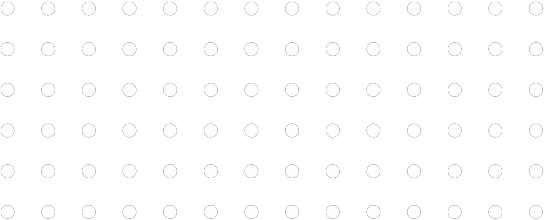Mechanical Load calculations
5 Days- That's a Lightning Fast Turnaround Time!
1
Upload Files and Pay
Upload PDF or CAD files, and pay to start the process. An engineer is auto-assigned to your project.
2
Document Review
An engineer will review all the documents shared and connect with you if anything else is required. Initial work starts.
3
Work Starts
Actual design/ report creation work begins.
4
Quality Check
The design and report are checked by the project manager to make sure 100% quality work is delivered.
5
Delivery
The design/ report is delivered to you.
NEED HELP OR ADDITIONALINFORMATION?
C A L L U S N O W
(646) 776-4010Get Your Mechanical Load Calculation In 3 Easy Steps
0%
Match standerds of IMC codes
Code Compliant
Accurate calculation of mechanical load
0 Errors
Make your mechanical systems safe and reliable
100% Safety
Improve efficiency to save cost
Save Cost
$ 750
Mechanical Load Calculation
Documents Required
Architectural drawings (floor plan & elevation) in CAD & PDF, building occupancy details, big equipment’s cut sheet/photos.
Delivery Time & Standards
We deliver your report (digitally) within 5 business days as per IMC standards.
What's not Covered
This service does not cover site visits, stamping, DOB/DEP filing, and more than 2 minor iterations.
Service Constraint
The service fee is limited to 3,000 sq. ft.* of area only.
$750*
Mechanical Load calculations


Match standerds of IMC codes.


Accurate calculation of mechanical load.


Make your mechanical systems safe and reliable.


Improve efficiency to save cost
Get Your Mechanical Load Calculation
Code Compliant
Calculate the capacity of your mechanical equipment according to local and international codes.
Avoid Equipment Oversizing
Avoid oversized equipment and components, and reduce the cost of your mechanical installations.
Energy Efficient
Find the most energy efficient solution to meet the mechanical requirements of your building.


Our on-demand engineering expert
Still not sure about how to proceed?
YOU CAN WRITE TO ME AT inquiry@ny-engineers.com

Mechanical systems have a very important role in buildings, keeping indoor conditions that are healthy, comfortable and safe for humans. Some examples of mechanical equipment are boilers, furnaces, air conditioners, chillers, air handlers, cooling towers, fan coils, water heaters, booster pumps, fire pumps and automatic sprinklers.
Building mechanical systems use large amounts of energy and water, especially if they are oversized or lacking smart controls. Using larger equipment than necessary also increases project costs, without offering any benefits in return. However, mechanical engineers do not recommend undersized equipment either, since this can create unsuitable or dangerous conditions. More is not better in mechanical design, and the best performance is achieved when equipment capacity is optimized for the building.
Mechanical load calculation is a very important step of the building design process. When the capacity of all mechanical installations is optimized for the needs of your building, you can achieve high performance at an optimal cost.
- Consider that many mechanical components are heavy and bulky, and modifications can be expensive and difficult.
- By working with qualified mechanical engineers during the design phase, you can avoid expensive change orders during construction.
The entire mechanical design process depends on load calculations. Even if you use the highest quality equipment, performance will be poor if mechanical load calculations were inaccurate.
Heating, ventilation and air conditioning systems keep a suitable indoor environment for humans. The following are some important functions of HVAC systems:
- Keeping a comfortable and healthy indoor temperature. In business settings, effective temperature control also boosts productivity. Scientific studies have found that productivity drops with both excessive heating and excessive cooling.
- Keeping the optimal humidity range recommended by ASHRAE and the US EPA. High humidity causes the proliferation of harmful organisms like mold, bacteria and dust mites. On the other hand, low humidity causes air pollutants to stay airborne for longer, and this includes viruses.
- Providing enough ventilation to conserve air quality. An adequate supply of outdoor air dilutes air pollutants, while displacing and removing stale air.
Large amounts of energy are needed to control indoor temperature, relative humidity and air quality. As a result, HVAC systems consume more energy than all other devices in most residential and commercial buildings. Undersized HVAC systems cannot accomplish their function effectively, but oversized systems waste capital upfront and energy in the long run.
With an accurate mechanical load calculation, HVAC engineers can specify the optimal equipment capacities for your building. You will not spend more than necessary when purchasing the equipment, and your indoor environment will be healthy and comfortable for occupants.
HVAC systems are characterized by their variety, and you will often find that many options can meet the needs of your building. HVAC engineers can help you answer the following questions:
- What energy source will my space heating system use? Some common options are natural gas, heating oil, propane and electricity.
- How will the heating and cooling effect be distributed throughout the building? Some systems distribute conditioned air directly, while others use water or refrigerant as the heat transfer medium.
- What airflow will the ventilation system deliver? Building codes normally specify a minimum airflow based on floor area, number of people, and occupancy classification. However, improved air quality is possible if the ventilation system also responds to air pollution measurements.
Regardless of the HVAC configuration used in a building project, mechanical load calculations are important to size equipment correctly.
Pumping systems have many important roles in buildings, and the following are some examples:
- Water booster pumps ensure an adequate water supply pressure, when the pressure provided by the local water utility is not enough.
- Hydronic pumps circulate hot water or chilled water, when used as a heat transfer medium in HVAC systems.
- Fire pumps ensure an adequate water supply for fire protection systems during emergencies.
Regardless of the application, a pumping system must meet an important condition: providing the right pressure and flow. The suction pressure must also be high enough to prevent cavitation; microbubbles form and collapse with low pressure, wearing down the pump impeller and other components. The mechanical load calculation for building projects also includes the workload of pumps.
Even when pumps are sized properly, their workload varies depending on building conditions. For this reason, the full capacity of a pumping system is not used all the time.
- Energy consultants recommend using variable frequency drives (VFD), which can adjust pump speed according to workload. This is much more efficient than restricting flow with a valve at the pump outlet.
- A valve wastes pumping power in the form of pressure drop, while a VFD ensures that the pump gets the right power input in the first place.
While an accurate load calculation ensures the right pump capacity, a VFD uses that capacity as efficiently as possible.

Fans are the cornerstone of ventilation systems, establishing the airflow needed in the building. The fans in ventilation systems can be classified into two types, based on how they move air:
- Supply fans move air into the building, causing a positive pressurization.
- Exhaust fans remove air from the building, causing a negative pressurization.
The two fan types are used individually or in combination, depending on how the ventilation system is designed. Building codes require exhaust fans in rooms that produce plenty of air pollution, such as kitchens and restrooms.
The capacity of a ventilation system is specified in cubic feet per minute (CFM) or air changes per hour (ACH). When airflow is specified in CFM, the number does not depend on the space being ventilated, since cubic feet and minutes are both fixed units. However, the definition of ACH changes depending on indoor space dimensions. For example, 5 ACH in a large conference hall is a much higher airflow than 5 ACH in a small office.
ASHRAE provides two methods for calculating the mechanical ventilation load, the Ventilation Rate Procedure (VRP) and the Indoor Air Quality Procedure (IAQP).
The VRP uses airflow tables that have been determined experimentally by ASHRAE, finding the optimal ventilation rate for each type of indoor space. The VRP rates consider three main factors:
- Purpose of the ventilated space: Classroom, office, restaurant, warehouse, etc.
- Floor area: Assuming the same occupancy classification, a larger space needs more ventilation to preserve air quality.
- Number of occupants: A full office needs more ventilation than an equally-sized office that is only 25% full, for example.
The VRP does not require air pollutants to be monitored directly. ASHRAE has already taken care of that task, when finding the optimal airflow rates for each type of indoor space. However, ventilation systems designed with the VRP have a key limitation - they cannot respond to a sudden increase in air pollution.
The IAQP is based on controlling air pollutants directly, without using the prescriptive airflow values in the VRP. This provides more flexibility when designing the ventilation system, and the process can be summarized in three main steps:
- Identify all the air pollutants that can be expected in the building.
- Determine the maximum concentration of each pollutant, based on reliable sources like the WHO or US EPA.
- Specify a ventilation system that provides enough airflow to keep all pollutants below their respective thresholds.
Many building codes make the VRP mandatory, since it uses prescriptive airflow rates from ASHRAE, instead of the open design approach of the IAQP. However, both methods can be combined to design a ventilation system that meets building codes, while enhancing indoor air quality.
In addition to finding the optimal airflow and fan capacity for indoor spaces, HVAC engineers must design adequate air ducts. Like with other mechanical installations, the right duct size offers the required performance at an optimal cost.
- Air ducts are bulky and they use large amounts of sheet metal. Oversized air ducts are very expensive, and they take up space that could be used for other building systems.
- Undersized ducts restrict airflow, and the ventilation system may not deliver the airflow required by code. Undersized ducts also tend to be noisy, causing discomfort and distraction.
Optimizing the layout of air ducts is important regardless of their size. Ideally, air ducts should fully cover a building interior while minimizing the total length used. Consider that project costs increase with every additional foot of ductwork.
Mechanical load calculations are important when sizing air ducts, since the first step is knowing how much air they must carry. In turn, the air duct layout affects the required fan capacity: longer ducts create a higher resistance to airflow, requiring more fan power. In other words, a duct layout that is poorly planned reduces energy efficiency, since fans use more electricity.
Air ducts can deliver conditioned air effectively across horizontal distances. However, moving conditioned air vertically is impractical while wasting energy. HVAC engineers normally use hydronic piping in high-rise constructions; pumping hot water or chilled water to upper floors is much more efficient than trying to move air vertically.
Like with air ducts, finding the right piping capacity is an important step of the design process. Oversized pipes are expensive, while drastically increasing the water volume that must be moved by pumps. On the other hand, undersized pipes restrict flow, and they will not deliver enough water to fan coils.
The capacity of hydronic pipes depends on the heating and cooling output required from individual fan coils. In turn, the water flow in hydronic piping determines the workload on the pumping system.
The number of hydronic loops changes depending on the HVAC design. Some systems have a single loop, which means that all fan coils must operate in the same mode - space heating or air conditioning. On the other hand, other hydronic systems have a chilled water loop and hot water loop, allowing cooling in some areas and heating in others. Finally, if the system uses a water-cooled chiller, there is another piping loop between the chiller and the cooling tower.
Fire protection systems are treated separately by building codes, and their design requirements are covered extensively by NFPA standards. However, many fire protection systems can be considered mechanical installations from an engineering standpoint. The following are some examples:
- Fire pumps
- Standpipes
- Automatic sprinklers
- Sprinkler booster pumps
- Smoke control systems
- Post-fire smoke purge systems
When other building systems malfunction, they normally cause inconvenience or disruption. On the other hand, if fire protection systems do not respond correctly, the consequences can include lost lives and massive property damage.
Mechanical load calculation is also important when designing fire protection systems. For example, fire pumps and sprinkler booster pumps must deliver enough pressure and flow during a fire emergency. At the same time, smoke control systems must have fans of enough capacity to remove smoke, especially in key areas like staircases and building exits.
Mechanical systems are responsible for the largest share of energy consumption in most buildings. Since mechanical installations have large and heavy components that are difficult to modify, MEP engineers recommend using energy efficiency measures from the start.
In particular, energy efficiency measures for HVAC systems have the highest potential to save energy. In most residential and commercial buildings, heating and cooling equipment consumes more energy than all other devices combined. An efficient HVAC design can achieve synergy with a high-performance building envelope, reducing winter heat loss and summer heat gain.
Automation can greatly increase the energy efficiency of mechanical systems. A building automation system (BAS) can monitor building needs in real time, optimizing the operation of air handlers, pumping systems, air conditioners and space heaters.
Mechanical Load Calculation

Mechanical systems have a very important role in buildings, keeping indoor conditions that are healthy, comfortable and safe for humans. Some examples of mechanical equipment are boilers, furnaces, air conditioners, chillers, air handlers, cooling towers, fan coils, water heaters, booster pumps, fire pumps and automatic sprinklers.
Building mechanical systems use large amounts of energy and water, especially if they are oversized or lacking smart controls. Using larger equipment than necessary also increases project costs, without offering any benefits in return. However, mechanical engineers do not recommend undersized equipment either, since this can create unsuitable or dangerous conditions. More is not better in mechanical design, and the best performance is achieved when equipment capacity is optimized for the building.
Mechanical load calculation is a very important step of the building design process. When the capacity of all mechanical installations is optimized for the needs of your building, you can achieve high performance at an optimal cost.
- Consider that many mechanical components are heavy and bulky, and modifications can be expensive and difficult.
- By working with qualified mechanical engineers during the design phase, you can avoid expensive change orders during construction.
The entire mechanical design process depends on load calculations. Even if you use the highest quality equipment, performance will be poor if mechanical load calculations were inaccurate.
HVAC Load Calculations
Heating, ventilation and air conditioning systems keep a suitable indoor environment for humans. The following are some important functions of HVAC systems:
- Keeping a comfortable and healthy indoor temperature. In business settings, effective temperature control also boosts productivity. Scientific studies have found that productivity drops with both excessive heating and excessive cooling.
- Keeping the optimal humidity range recommended by ASHRAE and the US EPA. High humidity causes the proliferation of harmful organisms like mold, bacteria and dust mites. On the other hand, low humidity causes air pollutants to stay airborne for longer, and this includes viruses.
- Providing enough ventilation to conserve air quality. An adequate supply of outdoor air dilutes air pollutants, while displacing and removing stale air.
Large amounts of energy are needed to control indoor temperature, relative humidity and air quality. As a result, HVAC systems consume more energy than all other devices in most residential and commercial buildings. Undersized HVAC systems cannot accomplish their function effectively, but oversized systems waste capital upfront and energy in the long run.
With an accurate mechanical load calculation, HVAC engineers can specify the optimal equipment capacities for your building. You will not spend more than necessary when purchasing the equipment, and your indoor environment will be healthy and comfortable for occupants.
HVAC systems are characterized by their variety, and you will often find that many options can meet the needs of your building. HVAC engineers can help you answer the following questions:
- What energy source will my space heating system use? Some common options are natural gas, heating oil, propane and electricity.
- How will the heating and cooling effect be distributed throughout the building? Some systems distribute conditioned air directly, while others use water or refrigerant as the heat transfer medium.
- What airflow will the ventilation system deliver? Building codes normally specify a minimum airflow based on floor area, number of people, and occupancy classification. However, improved air quality is possible if the ventilation system also responds to air pollution measurements.
Regardless of the HVAC configuration used in a building project, mechanical load calculations are important to size equipment correctly.
Pump Load Calculations
Pumping systems have many important roles in buildings, and the following are some examples:
- Water booster pumps ensure an adequate water supply pressure, when the pressure provided by the local water utility is not enough.
- Hydronic pumps circulate hot water or chilled water, when used as a heat transfer medium in HVAC systems.
- Fire pumps ensure an adequate water supply for fire protection systems during emergencies.
Regardless of the application, a pumping system must meet an important condition: providing the right pressure and flow. The suction pressure must also be high enough to prevent cavitation; microbubbles form and collapse with low pressure, wearing down the pump impeller and other components. The mechanical load calculation for building projects also includes the workload of pumps.
Even when pumps are sized properly, their workload varies depending on building conditions. For this reason, the full capacity of a pumping system is not used all the time.
- Energy consultants recommend using variable frequency drives (VFD), which can adjust pump speed according to workload. This is much more efficient than restricting flow with a valve at the pump outlet.
- A valve wastes pumping power in the form of pressure drop, while a VFD ensures that the pump gets the right power input in the first place.
While an accurate load calculation ensures the right pump capacity, a VFD uses that capacity as efficiently as possible.
Fan Load Calculations

Fans are the cornerstone of ventilation systems, establishing the airflow needed in the building. The fans in ventilation systems can be classified into two types, based on how they move air:
- Supply fans move air into the building, causing a positive pressurization.
- Exhaust fans remove air from the building, causing a negative pressurization.
The two fan types are used individually or in combination, depending on how the ventilation system is designed. Building codes require exhaust fans in rooms that produce plenty of air pollution, such as kitchens and restrooms.
The capacity of a ventilation system is specified in cubic feet per minute (CFM) or air changes per hour (ACH). When airflow is specified in CFM, the number does not depend on the space being ventilated, since cubic feet and minutes are both fixed units. However, the definition of ACH changes depending on indoor space dimensions. For example, 5 ACH in a large conference hall is a much higher airflow than 5 ACH in a small office.
ASHRAE provides two methods for calculating the mechanical ventilation load, the Ventilation Rate Procedure (VRP) and the Indoor Air Quality Procedure (IAQP).
The VRP uses airflow tables that have been determined experimentally by ASHRAE, finding the optimal ventilation rate for each type of indoor space. The VRP rates consider three main factors:
- Purpose of the ventilated space: Classroom, office, restaurant, warehouse, etc.
- Floor area: Assuming the same occupancy classification, a larger space needs more ventilation to preserve air quality.
- Number of occupants: A full office needs more ventilation than an equally-sized office that is only 25% full, for example.
The VRP does not require air pollutants to be monitored directly. ASHRAE has already taken care of that task, when finding the optimal airflow rates for each type of indoor space. However, ventilation systems designed with the VRP have a key limitation - they cannot respond to a sudden increase in air pollution.
The IAQP is based on controlling air pollutants directly, without using the prescriptive airflow values in the VRP. This provides more flexibility when designing the ventilation system, and the process can be summarized in three main steps:
- Identify all the air pollutants that can be expected in the building.
- Determine the maximum concentration of each pollutant, based on reliable sources like the WHO or US EPA.
- Specify a ventilation system that provides enough airflow to keep all pollutants below their respective thresholds.
Many building codes make the VRP mandatory, since it uses prescriptive airflow rates from ASHRAE, instead of the open design approach of the IAQP. However, both methods can be combined to design a ventilation system that meets building codes, while enhancing indoor air quality.
Air Duct Calculations
In addition to finding the optimal airflow and fan capacity for indoor spaces, HVAC engineers must design adequate air ducts. Like with other mechanical installations, the right duct size offers the required performance at an optimal cost.
- Air ducts are bulky and they use large amounts of sheet metal. Oversized air ducts are very expensive, and they take up space that could be used for other building systems.
- Undersized ducts restrict airflow, and the ventilation system may not deliver the airflow required by code. Undersized ducts also tend to be noisy, causing discomfort and distraction.
Optimizing the layout of air ducts is important regardless of their size. Ideally, air ducts should fully cover a building interior while minimizing the total length used. Consider that project costs increase with every additional foot of ductwork.
Mechanical load calculations are important when sizing air ducts, since the first step is knowing how much air they must carry. In turn, the air duct layout affects the required fan capacity: longer ducts create a higher resistance to airflow, requiring more fan power. In other words, a duct layout that is poorly planned reduces energy efficiency, since fans use more electricity.
Hydronic Piping Calculations
Air ducts can deliver conditioned air effectively across horizontal distances. However, moving conditioned air vertically is impractical while wasting energy. HVAC engineers normally use hydronic piping in high-rise constructions; pumping hot water or chilled water to upper floors is much more efficient than trying to move air vertically.
Like with air ducts, finding the right piping capacity is an important step of the design process. Oversized pipes are expensive, while drastically increasing the water volume that must be moved by pumps. On the other hand, undersized pipes restrict flow, and they will not deliver enough water to fan coils.
The capacity of hydronic pipes depends on the heating and cooling output required from individual fan coils. In turn, the water flow in hydronic piping determines the workload on the pumping system.
The number of hydronic loops changes depending on the HVAC design. Some systems have a single loop, which means that all fan coils must operate in the same mode - space heating or air conditioning. On the other hand, other hydronic systems have a chilled water loop and hot water loop, allowing cooling in some areas and heating in others. Finally, if the system uses a water-cooled chiller, there is another piping loop between the chiller and the cooling tower.
Mechanical Load Calculation in Fire Protection Systems
Fire protection systems are treated separately by building codes, and their design requirements are covered extensively by NFPA standards. However, many fire protection systems can be considered mechanical installations from an engineering standpoint. The following are some examples:
- Fire pumps
- Standpipes
- Automatic sprinklers
- Sprinkler booster pumps
- Smoke control systems
- Post-fire smoke purge systems
When other building systems malfunction, they normally cause inconvenience or disruption. On the other hand, if fire protection systems do not respond correctly, the consequences can include lost lives and massive property damage.
Mechanical load calculation is also important when designing fire protection systems. For example, fire pumps and sprinkler booster pumps must deliver enough pressure and flow during a fire emergency. At the same time, smoke control systems must have fans of enough capacity to remove smoke, especially in key areas like staircases and building exits.
Importance of Energy Efficiency in Mechanical Design
Mechanical systems are responsible for the largest share of energy consumption in most buildings. Since mechanical installations have large and heavy components that are difficult to modify, MEP engineers recommend using energy efficiency measures from the start.
In particular, energy efficiency measures for HVAC systems have the highest potential to save energy. In most residential and commercial buildings, heating and cooling equipment consumes more energy than all other devices combined. An efficient HVAC design can achieve synergy with a high-performance building envelope, reducing winter heat loss and summer heat gain.
Automation can greatly increase the energy efficiency of mechanical systems. A building automation system (BAS) can monitor building needs in real time, optimizing the operation of air handlers, pumping systems, air conditioners and space heaters.


